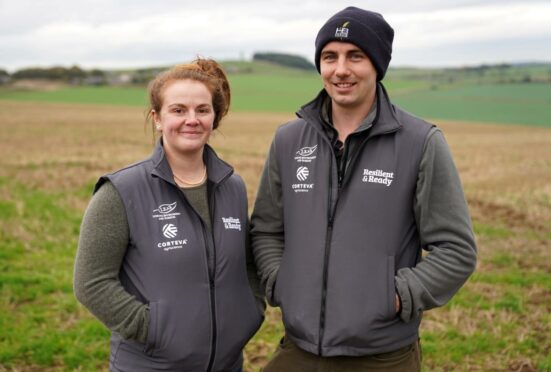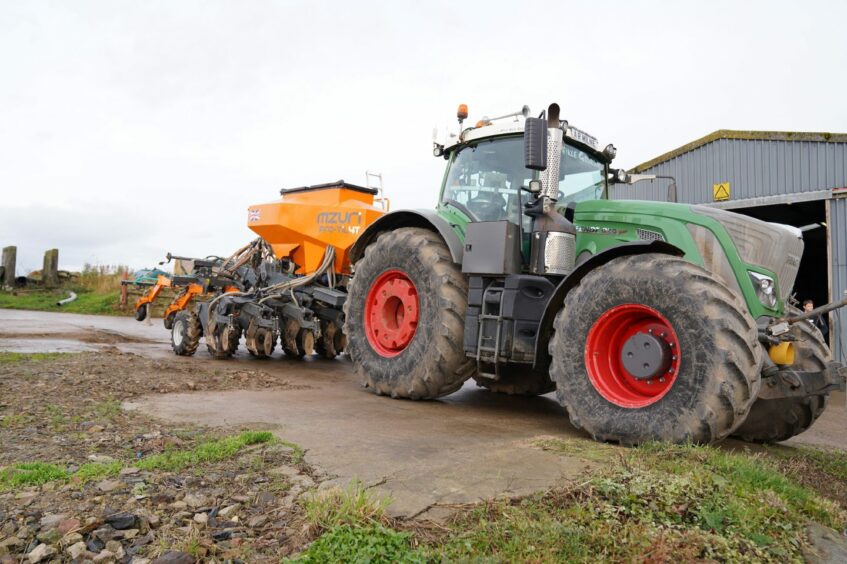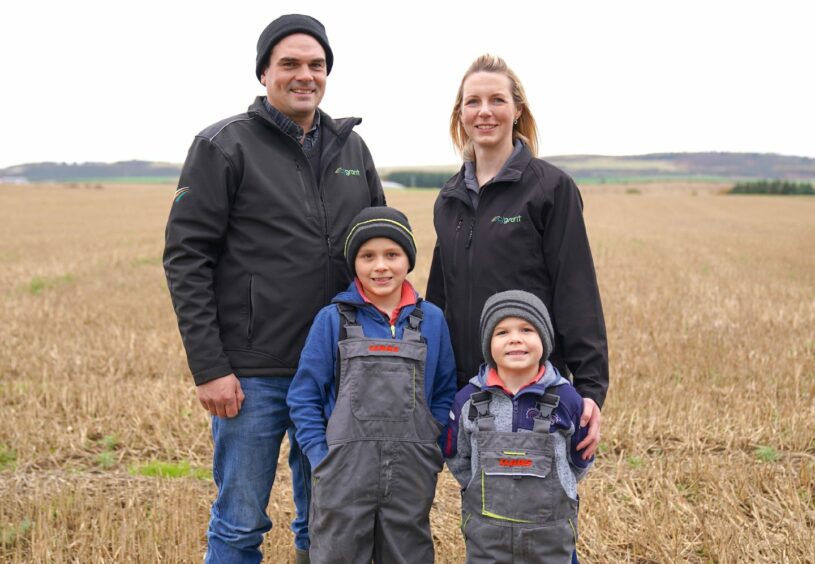From direct drilling wheat to growing beans as an alternative to soya, two Aberdeenshire farming businesses have made changes to make them more resilient in the future.
Harriet Ross and Ben Lowe from HB Farms at Newseat of Dumbreck, near Udny, and Craig and Claire Grant from CJ Grant at Kindrought, near Fraserburgh, have made changes to their businesses as part of their involvement in the Resilient and Ready programme.
The three-year initiative – run jointly by LEAF (Linking Environment and Farming) and Corteva Agriscience – involves a programme of training, consultancy and trials to help British farmers become resilient and ready for the future.
At Newseat of Dumbreck, one of the changes introduced by Harriet and Ben is a move to direct drill wheat in ground that was previously grass.
“A lot of arable farmers have lost grass and it’s a big loss to the soil,” said Ben.
“We have created a beautiful soil structure that the grass has left us and the Mzuri drill has drilled wheat straight into it.”
Rather than ploughing the grass leys up, the couple sprayed the grass off and spread digestate on it before direct drilling the wheat.
Harriet said: “It was a trial last year and we had one we ploughed and one we combi-drilled. The field drilled with the Mzuri did 0.5 tonnes a hectare more yield-wise.”
Costings for both fields show improved margins in the field direct-drilled – a net margin of £1,278.09 per hectare, compared to £1,173.59 for the field which was ploughed.
Harriet, who was recently crowned Young Farmer of the Year at the Farmers Weekly Awards, said: “We also did a carbon footprint for each field as well using Agrecalc and there was not much of a difference, but we don’t really know about the carbon being released by ploughing or the carbon being sequestered.
“Worm counts did show more worms in the Mzuri drilled crop than the ploughed and power harrow drilled one.”
Meanwhile, the Grants at Kindrought have trialled growing spring beans to provide protein for their poultry business which currently buys in around 1,000 tonnes of soya a year for its 160,000 laying hens.
Craig said: “Last year we thought it was worth having a go with beans when soya prices were high.
“It looked fantastic – we didn’t put on any fertiliser at all and we wanted 1.5 tonnes per acre. We managed to harvest two tonnes per acre and it’s valued at £220 a tonne; it has come back at 25% protein.”
The Grants estimate the cost of growing the beans is £3 per percentage of protein – this compares to a cost of £8.10 per percentage protein for bought-in soya.
Craig said getting the beans to die off before harvest was challenging, however he is impressed with the yields achieved this year and plans to grow more beans next year.
He added: “In the next five years we are hoping to have 50% of our protein grown locally – it’s going to mean 1,000 tonnes of beans.”
The couple is working with local growers to get them to grow and supply them with spring beans, and they plan to ditch any fungicide applications on next year’s crop in the hope chocolate spot will kill the beans off to make them easier for harvesting.
Claire said straw from the beans had been baled – with yields of 3.5 tonnes of straw to the acre at 9% protein – and the couple plans to utilise this for feed in their beef enterprise.


